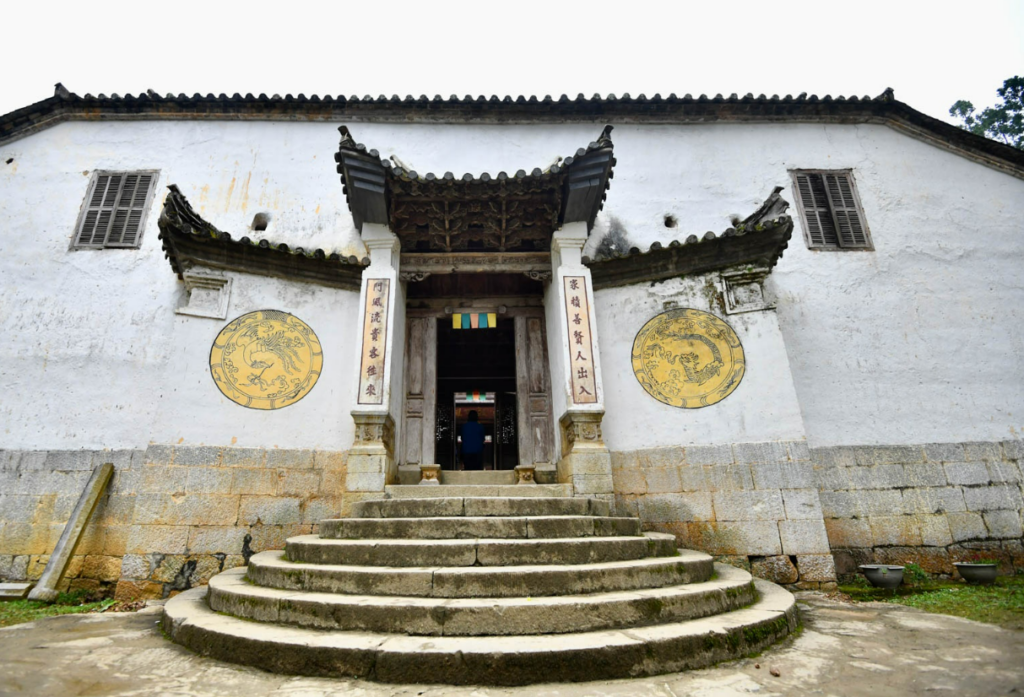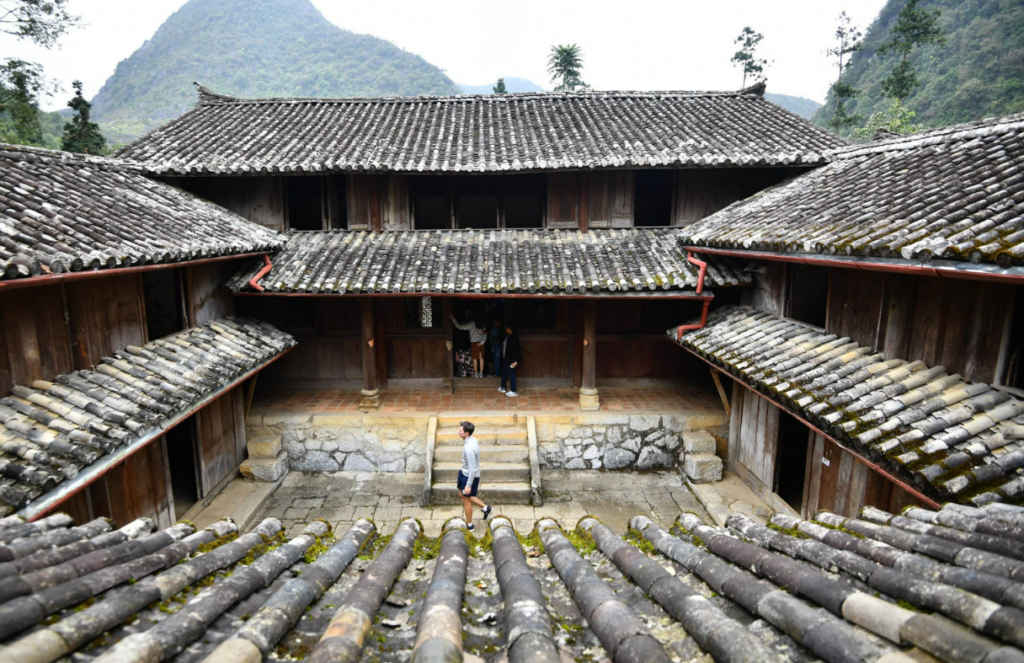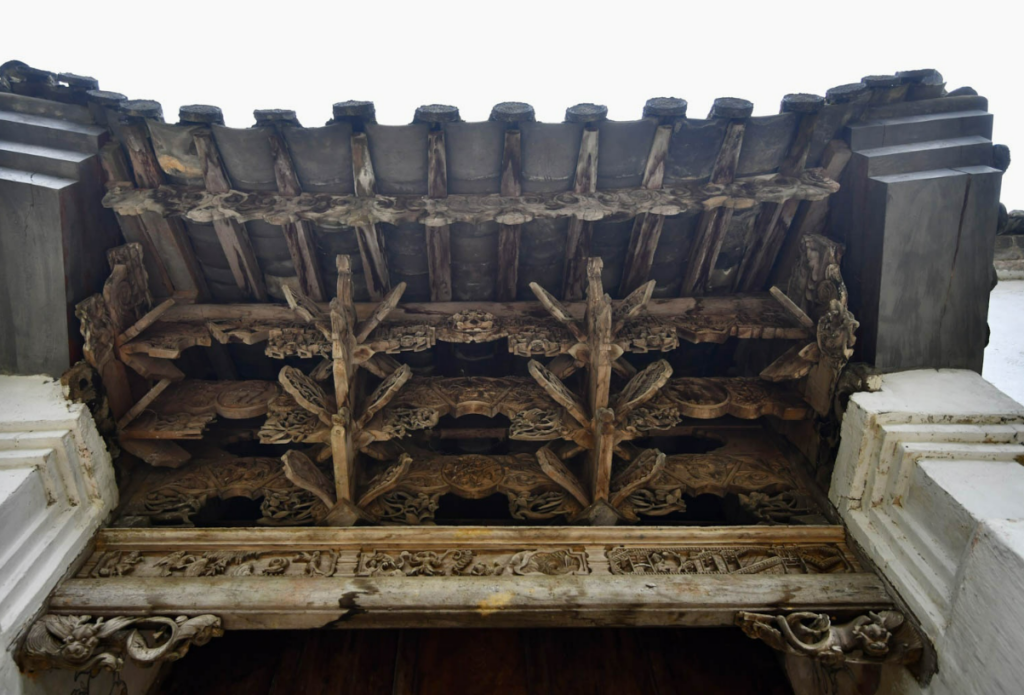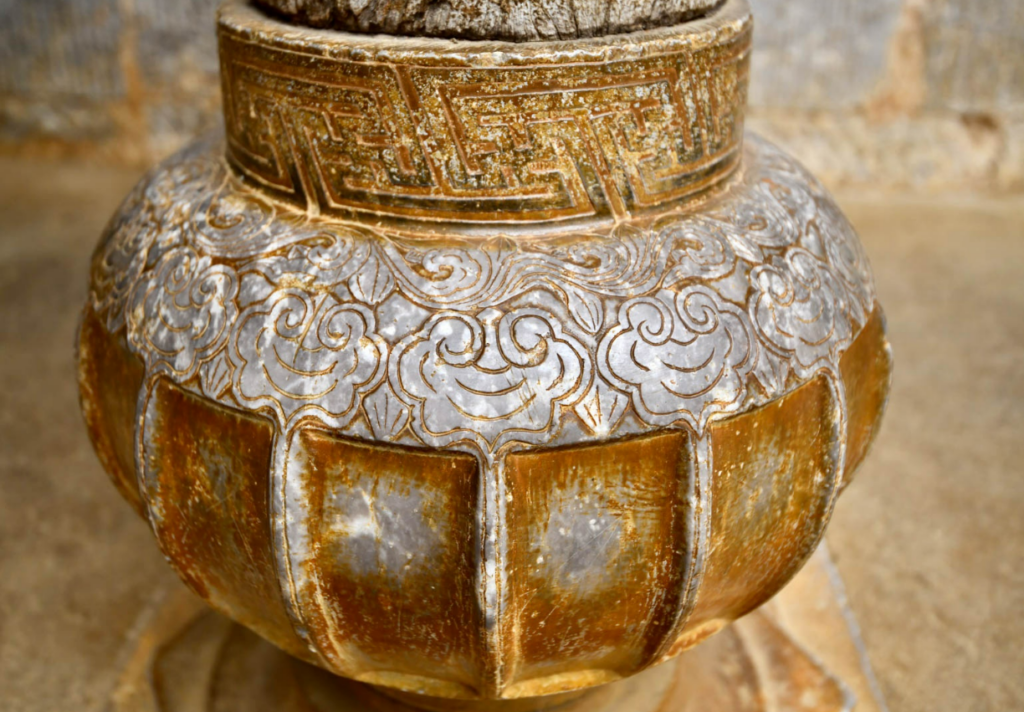The Hmong King Palace is a historic relic that vividly reflects the lifestyle of the Hmong King nearly a century ago. The entire palace took 9 years to complete and cost 150 million silver coins, equivalent to 150 billion dong at that time. Let explore with LOKA Ha Giang who was the owner of the palace? What did he do to be elevated as a king and how did he have so much money?

Located in Sa Phin valley, Lung Phin commune (Dong Van town, Ha Giang province), the palace is about 125 km from the center of Ha Giang city and 25 km from Dong Van town. This palace is associated with the reputation and career of two Hmong men: Hmong King Vuong Chinh Duc and Vuong Chi Sinh.
Currently, it is a national-level architectural relic and an unmissable destination when visiting Ha Giang. The ticket price for visiting is 25,000 dong/adult and 10,000 dong/child.
Who is the owner of this palace?
The Hmong King Palace or also known as the house of Hmong King has an area of nearly 3,000 m2, built in 1919 and completed in 1928. Vuong Chinh Duc (1865 – 1947) is known as the “leader” of the Hmong people in Dong Van under the French colonial period.
Together with the H’mong people, Vuong Chinh Duc participated in an organization called “Huou Nai” to fight against the Black Team (from China). After days of fighting, Duc was elevated to the position of leader or Hmong King.
In addition, at that time, this place was planted a large amount of poppy. Vuong Chinh Duc was the one who directly purchased at a high price from the local people and sold to France, Hong Kong, and China in large quantities. Selling more than 20 tons of opium per year brought him a huge income, making him famous in the region. After the August Revolution in 1945, the regime of kings and lords in Vietnam ended, and the Democratic Republic of Vietnam was established. Vuong Chinh Sinh, Hmong King’s son, was invited by Uncle Ho to join the revolution and changed his name to Vuong Chi Thanh. He was invited back to Hanoi to participate in the first and second National Assembly (I & II). Later, he returned to be the first chairman of Dong Van town.

Currently, poppies have been eliminated over Vietnam and Ha Giang in particular. Ha Giang as well as the people there have recognized the development of the non-smoking service industry – tourism – for conservation and local economic development.
Inside the Hmong King Palace
The architecture of Hmong King’s house is influenced by 03 cultures: Chinese, Hmong, and French. The house has four horizontal houses, six vertical houses, three open courtyards: front, middle, and back with 64 rooms for 100 people, walls made of blue stone, roofs made of pine wood, and tiles made of baked clay.

Entering the palace area, the first image is rows of tall and straight cunninghamia trees (sa moc tree), hundreds of years old, in front of the gate. The gate to the palace is made of carved stone and is quite sophisticated. The curved gate is decorated with bats, a symbol of “fortune”. The wooden gate roof is intricately carved with many patterns.
The Vuong family palace is a combination of three cultures: Chinese, Hmong, and French. The palace architecture partially mimics the Qing Dynasty architecture of China, combined with Hmong decoration and French art. The palace is a blend of blue stone, cunninghamia wood, and baked clay tiles, following the yin and yang. Despite the ups and downs of history. The Vuong family palace still retains its ancient appearance, still bearing the beauty of majesty and grandeur.

The entrance of the main hall is covered with roof tiles decorated with the character “longevity”. After nearly a century, the delicate carvings are still preserved and have not deteriorated. Outside the main hall, a royal edict painting (Biên chính khả phong – The authority and power to govern border regions) in Chinese characters, bestowed by King Khải Định, is hung. The stone pillars have the symbol of poppy flowers in the Vương family palace, and have been polished with over 900 silver coins (Indochinese silver coins, equivalent to 1 billion dong today).
In conclusion, the Hmong King’s palace is the most outstanding architectural masterpiece still preserved until now. It is a must-visit destination in Ha Giang and only about 20km away to Dong Van town. There are many accommodations and services you can choose to stop by. If you have any difficulties in your upcoming or current trip, don’t hesitate to contact us at LOKA Ha Giang. We are here to support you a suitable and safe journey. Have a good trip!

My name is Giap Van Hai, I am a travel enthusiast and always want to share the beauty of Ha Giang with everyone. With a deep love for the mountains and the typical culture of Ha Giang people, I decided to establish Loka Ha Giang – a website specializing in Ha Giang tourism services. We provide travel services such as Ha Giang Loop, Ha Giang Trekking, Ha Giang Easyrider
